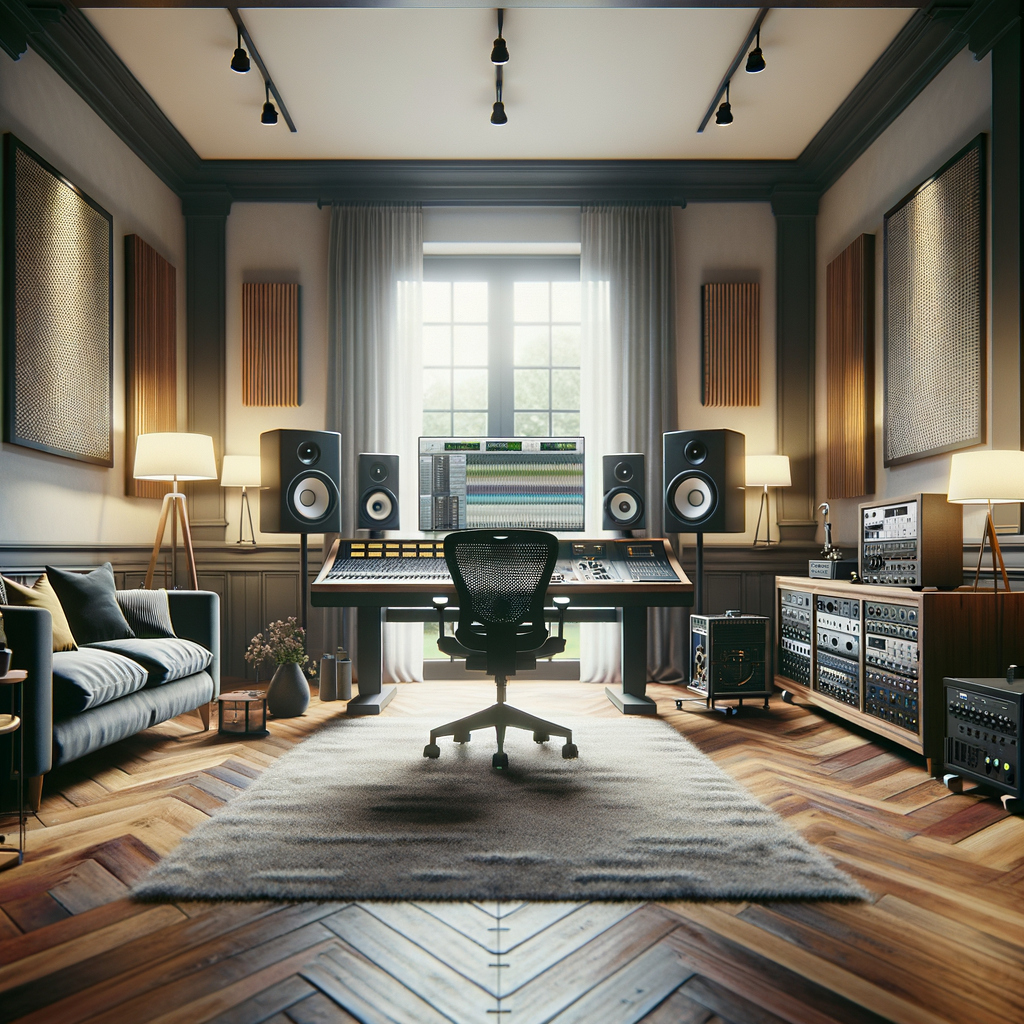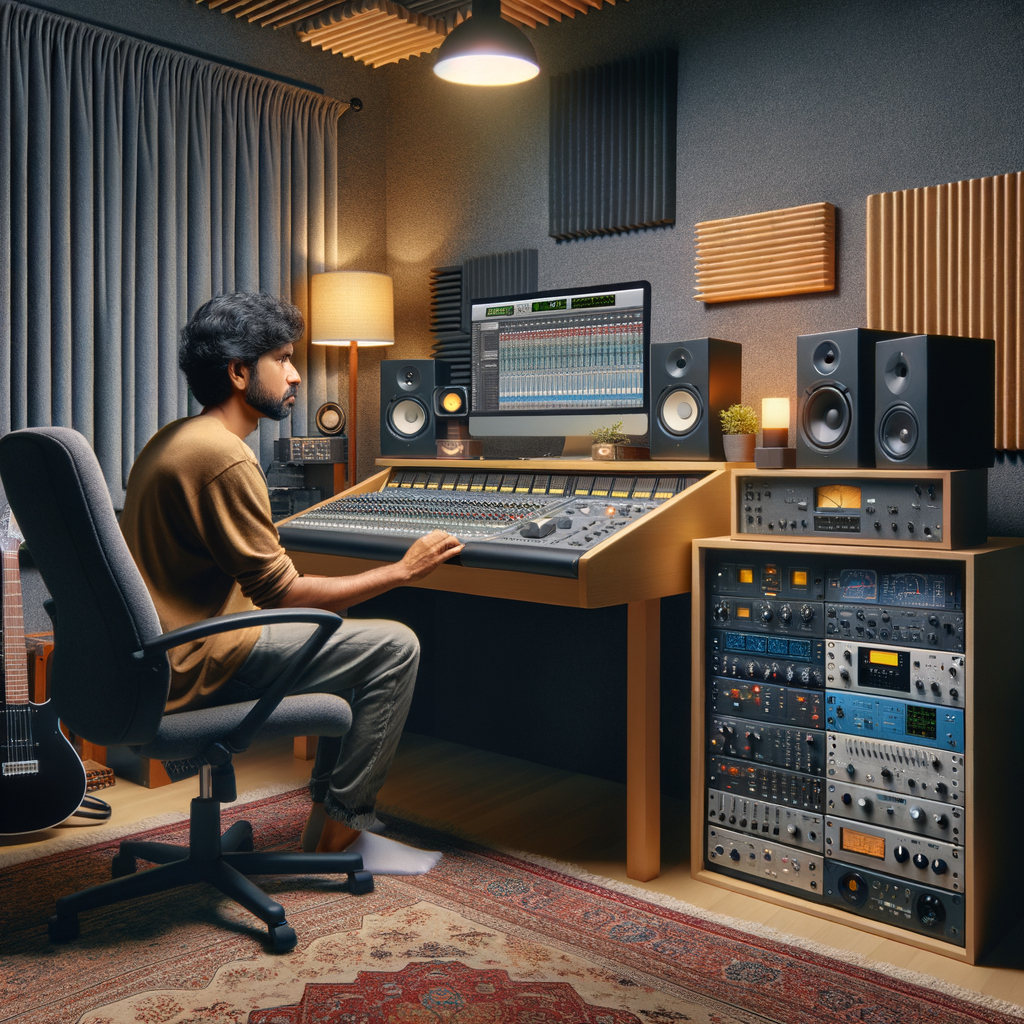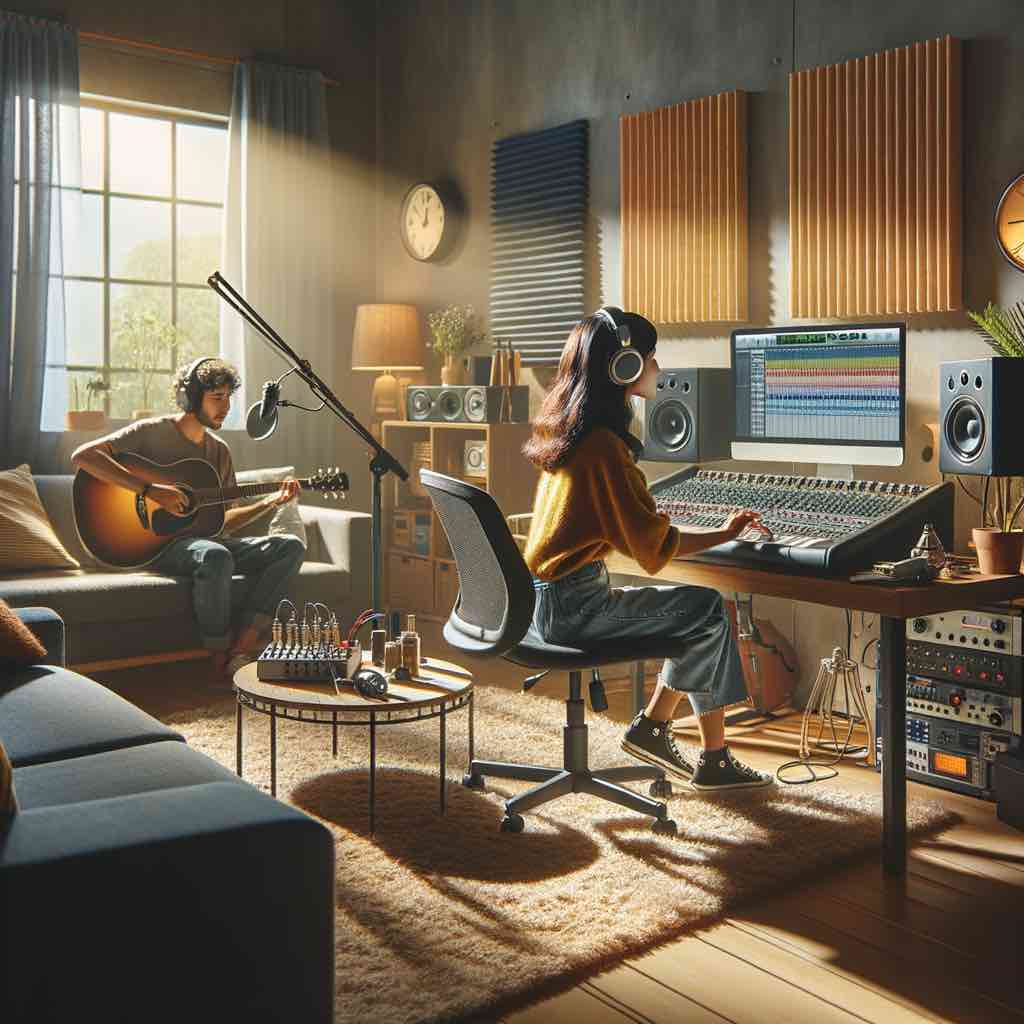Did you know that you can use professional-quality studio monitors in your home studio and not get anywhere near professional-quality results?
That’s because your studio monitors are only as good as your listening environment. But even if your home studio doesn’t have the best acoustics, room correction technology can help.
Yeah, acoustic treatment can improve many of the acoustic challenges you’ll face in your home recording studio. But, let’s face it, there’s only so much that you can do in your DIY recording space.
Luckily, room correction technology can address many of the acoustic deficiencies present in your space. By addressing these deficiencies, you’ll be more confident that your mixes translate well across various playback systems and environments.
Let’s discuss room correction technology in more detail.
We’ll also explore how this tool can help you optimize your studio monitor output quality and help you get closer to achieving ready-ready mixes from the comfort of your home studio.
Overview
Studio monitors are influenced by the acoustics of the listening environment, which can result in inaccurate audio perception.
Room correction technology addresses these issues by using EQ adjustments and other techniques to neutralize the impact of room reflections on speaker output.
Room Correction Technology: The Cheat Code to Improving Your Room Acoustics

Room correction technology uses the measured acoustic response of your room to enhance your studio monitor output audio.
How does it enhance your output audio? Mainly through EQ adjustments, and occasionally incorporating timing or phase alterations, depending on the specific software you use.
Its objective is to neutralize the influence of room reflections, which can color the sound that your speakers emit.
Studio Monitors and Room Acoustics
Studio monitors are built to have a flat frequency response. In other words, they don’t alter the audio they emit for your listening pleasure. They provide a transparent representation of your audio signals.
This flat frequency response ensures that you can make informed mixing decisions, without any coloration introduced by the monitors themselves.
However, studio monitors don’t operate in a bubble. The acoustics in your room can alter your output audio by the time it reaches your ear.
For instance, depending on the acoustics in your room, you may hear more low-end in your mix than is present.
As a result, you may cut back too much on the low-end frequencies in your mix causing your bass to sound thin when played in different environments.
The Benefit of Using Room Correction Technology
What room correction technology does is help flatten the frequency response of your room to help you hear a more accurate version of your output audio.
Hearing the most accurate version of your audio as it comes out of your monitor is vital for mixing.
You’ll be assured that you’re making informed mixing decisions rather than being misled by the acoustic deficiencies in your listening environment. thereby complicating the process of achieving accurate mixing.
Room Correction Technology Scenario: How it Leads to Cleaner Mixes
Consider a scenario where your room acoustics result in a dip in your room’s frequency response at 100 Hz. This dip masks certain low-frequency elements present in your output audio, leading you to add an EQ boost in the 100 Hz region.
While this boost may have seemed necessary in your mixing environment, it’ll result in an excessively bass-heavy mix when played on other systems.
Room correction software steps in to resolve this issue. It identifies frequency response inconsistencies and compensates for them.
In this instance, it might boost the 100 Hz frequency range to offset the attenuation caused by your room, resulting in a more accurate representation of your output audio.
How Room Correction Technology Can Optimize Studio Monitor Performance

Room correction technology can help your studio monitors deliver a more faithful reproduction of your audio.
This correction helps you make more accurate mixing decisions, ensuring your audio playback sounds consistent across various systems and environments.
Room correction technology is particularly crucial for home recording studios due to the inherent acoustic limitations of domestic environments.
Room Correction Technology in Home Recording Studios
Purpose-built professional studios are carefully designed and treated to minimize acoustic distortions. However, home recording spaces often lack such optimization, leading to a variety of acoustic inconsistencies that can affect the accuracy of your output audio.
In a home recording studio, factors such as room dimensions, wall materials, furniture placement, and other structural elements can introduce unwanted reflections, resonances, and frequency imbalances.
Moreover, home recording studios typically have limited space and budget for extensive acoustic treatment, further exacerbating the problem.
These acoustic irregularities can color the sound that your studio monitors emit, making it challenging for you to accurately assess the audio that you’re working with.
Room correction technology can compensate for these acoustic deficiencies and ensure that the sound you hear through your studio monitors is as faithful to the original audio as possible.
How Room Correction Technology Works
Room correction technology operates by employing sophisticated algorithms to analyze the acoustic characteristics of a room and make precise adjustments to audio playback in real time.
This process typically begins with the measurement of the room’s acoustic response using a calibrated microphone placed at various locations within the listening area.
The collected data, which includes information on frequency response, reflections, resonances, and standing waves, is then analyzed by the room correction software to create a detailed profile of the room’s acoustic properties.
Based on this analysis, the software generates correction filters that are applied to the audio signal as it is played through the studio monitors or speakers.
These correction filters aim to compensate for the effects of room acoustics, such as frequency peaks or dips, uneven bass response, and spatial irregularities, ultimately resulting in a more accurate and balanced sound reproduction.
By effectively mitigating the distortions introduced by the listening environment, room correction technology enables audio professionals to achieve greater precision and consistency in their mixing, mastering, and production processes.
Is Room Correction Technology Necessary?

Room correction technology, while not essential, can greatly enhance how reliable the audio coming from your studio monitors is.
In many cases, the acoustic characteristics of your studio can significantly impact your perception of your sound quality. Your listening environment can introduce coloration that hinders your ability to make informed mixing and mastering decisions.
By utilizing room correction technology, you can achieve more accurate and consistent audio reproduction.
While room correction technology is not a substitute for proper acoustic treatment and speaker placement, it can complement these measures and further optimize your listening environment.
Ultimately, the decision to use room correction technology depends on individual preferences, workflow requirements, and the specific challenges posed by the acoustic properties of the room.
However, for those seeking improved accuracy and reliability in audio monitoring, room correction technology can be a valuable asset in achieving optimal sound quality and consistency.
Conclusion
Studio monitors are essential tools for audio professionals, providing a critical reference point for mixing, mastering, and production tasks. However, despite their importance, studio monitors are not without limitations, which can impact the accuracy and fidelity of audio reproduction.
By utilizing room correction software, home studio owners can effectively mitigate the adverse effects of room acoustics on audio monitoring. This allows for more accurate mixing, mastering, and production processes, ultimately leading to higher-quality recordings.
Additionally, room correction technology helps home studio setups achieve a level of consistency and reliability in audio playback that is essential for producing professional-grade music, podcasts, videos, and other multimedia content.
Ultimately, room correction technology, enables producers and engineers to overcome the inherent limitations that room acoustics present to achieve optimal sound quality.








